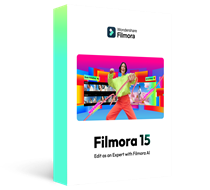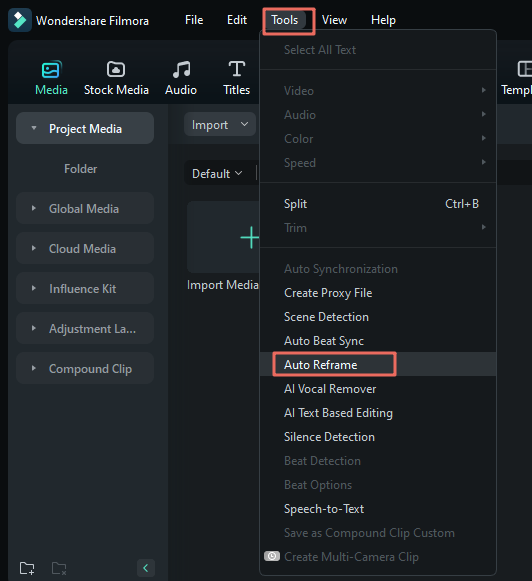Have you watched the iconic TV show Friends? The show's vibrant energy and seamless scene transitions are largely thanks to its multi-camera setup. Now, compare that to a film like 1917. It uses a single-camera approach to create a continuous look that makes viewers feel as if they're right there with the characters.
As you can see, single-camera and multi-camera setups can influence a production. They fundamentally impact the storytelling, pacing, and visual style of a production. So, how do you know which setup is best for your project?
We’ll break down the core differences between single-camera and multi-camera setups along with their examples, and recommend the best software for editing both types of setups.

In this article
Part 1. Single Camera Setup and Examples
A single-camera setup involves using one camera to capture footage. Each scene is shot from different angles or perspectives one at a time. This method gives filmmakers significant control over individual shots, so they can capture precise composition, lighting, and focus adjustments.
However, the attention to detail required for this approach can demand more time and resources to achieve the final product. The process often involves longer shooting days, as each angle and scene must be carefully planned and executed. Additionally, the editing process can be more complex. It requires careful assembly of shots to maintain visual coherence.

Examples of Single-Camera Productions
- Breaking Bad: This critically acclaimed series is known for its meticulous cinematography and storytelling. The single-camera approach allowed the creators to craft each scene with precise visual detail, highlighting the dramatic impact for viewers.
- The Office (U.S.):While it often resembles a documentary, "The Office" used a single-camera setup to capture the characters' interactions and reactions up close. This approach contributed to the show's unique style and humor.
- The Grand Budapest Hotel: Directed by Wes Anderson, this film is a prime example of how a single-camera setup can create a visually striking and highly stylized narrative. Anderson’s meticulous planning and camera work showcase the benefits of a single-camera approach in achieving a unique look and feel.
Part 2. Multi-Camera Setup and Examples
On the other hand, a multi-camera setup involves using multiple cameras simultaneously to capture different angles and perspectives of a scene in real time. This approach usually involves placing several cameras around the set or location, each recording different aspects of the action. You can capture a scene from various angles at once. No need for multiple takes.
While multi-camera setups can save time, they may also involve higher costs due to the need for additional equipment and crew. Multiple cameras, associated gear, and the need for experienced personnel to operate and manage them can increase the overall budget.

Examples of Multi-Camera Productions
- The Big Bang Theory: Similar to Friends, this popular sitcom used a multi-camera setup to deliver consistent and high-quality coverage of its comedic scenes. The setup can capture multiple angles and audience reactions and enhance the overall comedic timing and impact.
- Live Sports Broadcasts: Multi-camera setups are standard in live sports broadcasts, where multiple cameras capture different angles of the action in real time. This approach ensures comprehensive coverage of the event and allows viewers to experience the action from various perspectives.
- Talk Shows: Shows likeThe Tonight Show or The Ellen DeGeneres Show use multi-camera setups to capture guest interviews, audience reactions, and live performances from multiple angles.
Part 3. Comparing Single Camera vs. Multi-Camera Production
Between single-camera vs multi-camera setups, each offers distinct advantages and challenges that can influence the outcome of a production. Neither technique is inherently superior to the other; it all depends on your specific project needs, goals, and creative vision.
Refer to the table below for a quick comparison:
| Single Camera | Multi-Camera | |
| Flexibility | High flexibility to adjust shots, angles, and settings. | Limited flexibility once setup is in place. |
| Time and Resources | Requires more time for setup, shooting, and editing. Higher investment in detailed planning. | Faster production times with simultaneous recording. Requires more equipment and setup resources. |
| Production Workflow | Typically slower; requires multiple takes. | Faster and more efficient shooting and editing, with multiple cameras capturing different angles at the same time. |
| Use Cases | Ideal for narrative films, detailed cinematography, and projects requiring precise control. | Best for live events, talk shows, and any production needing real-time coverage. |
The differences between single-camera and multi-camera are also more apparent become even more apparent when you compare the single camera vs multi-camera examples. Friends and The Office are both sitcoms, but they utilize these setups in contrasting ways.
Friends, with its multi-camera approach, captures scenes from multiple angles simultaneously, which enhances its energetic and interactive feel. In contrast, The Office uses a single-camera setup to create a mockumentary style. It creates a more intimate and realistic view of its characters and their interactions.
Part 4. The Best Software for Both Single and Multi-Camera Production
Another factor that is just as important as choosing between a single and multicamera production is selecting the right software for editing both types of setups. You may not have a problem with editing single-camera footage. But for multi-camera editing, you'll need software that helps you sync different camera angles and switch between views easily.
One recommended software that can do both single and multi-camera editing is Wondershare Filmora. It provides all the basic to advanced video editing features needed for single-camera production, including cutting, trimming, and merging clips, as well as applying effects, transitions, and color corrections.

For multi-camera production, Filmora offers a dedicated multi-camera editing mode that allows you to sync multiple camera angles, switch between views, and manage multiple tracks seamlessly. Some of its features are:
- Automatic Synchronization:Filmora automatically syncs multiple camera angles based on audio waveforms and the first frame, eliminating the need for manual adjustments.
- Real-Time Preview: You can preview and switch between different camera angles in real time, which helps for efficient decision-making during the editing process.
- Multi-Camera Track Management:Filmora supports managing multiple tracks simultaneously, so it’s easier to handle complex timelines with various camera angles.
- Comprehensive Editing Tools: Perform everything from basic edits like cutting and trimming to advanced adjustments such as applying effects and color corrections, all within one platform.
- AI-powered Features:Utilize advanced AI features such as Auto Reframe to automatically adjust the aspect ratio for different platforms and Auto Stabilization to smooth out shaky footage.
- Sync multiple cameras and allow quick angle switches
- Vast video/audio effects and creative assets.
- Powerful AI for effortless content creation.
- Intuitive, professional yet beginner-friendly.
- Works on Mac, Windows, iOS, and Android.

How to Edit Single Camera Footage with Filmora
Editing single-camera footage is easy in Filmora due to its intuitive interface. You can make a smooth transition between each clip, fix the color, add titles, and apply various effects to your video. Let’s try creating single-camera footage like those in Wes Anderson's film.
- Step 1: Import Your Footage and Maintain Consistent Look
Begin by importing your single-camera footage into Filmora. Ensure all your clips are in the same size and aspect ratio.

You can use the Auto Reframe feature to automatically adjust each clip so that the main subject stays centered and the composition looks consistent. To do it, you can right-click on the clip from the Project Media and select the Auto Reframe.

After adjusting your clips composition and framing, drag and drop the them onto the timeline.
- Step 2: Apply Color Grading
Use Filmora’s color correction tools to adjust the colors and create a stylized look. Navigate to Color on the right panel. You can experiment either with the color wheel, HSL settings, Curves, or basic adjustments to fine-tune the hue, saturation, contrast, and etc.

- Step 3: Add Smooth Transitions
Next, try to incorporate smooth transitions between clips to maintain a seamless flow. Go to the Transition tab and select the one that suits your needs. You can position the transition between the clips (overlap), before (prefix) a clip, or after (postfix) a clip.

- Step 4: Add Titles and Text
Create visually striking titles and text using Filmora’s text tools. Go to the Titles tab and choose fonts and styles that complement the vibe of your video. Add it to the timeline.

- Step 5: Apply Effects and Filters
Then, navigate to the Effects tab to enhance your video with Filmora’s built-in effects and filters. Look for options that match the the visual style you have in mind and apply it to your clip.

How to Edit Multi-Camera Footage with Filmora
Before you start editing multiple camera footage in Filmora, make sure all the clips have the same audio or start with the same scene for easier synchronization. Then, follow the steps below:
- Step 1: Sync the Multicam Video Clips
To sync your video clips, select all the clips you want to include in your multicam edit on the Project Media panel. Then, right-click and choose Create Multi-Camera Clip from the menu.

Filmora allows you to sync clips using audio or the first frame. For this tutorial, we will be using audio to synchronize the clips.

- Step 2: Switch the Camera Angle
Now that your multi-camera clip is set up, you can start editing and switching between angles from your multicam video. To do this, switch to multi-camera view by clicking on the “Switch Multi-Camera View” button at the top of the preview window.

In this view, you can switch between different angles by simply clicking on the desired camera while the video plays. This is your "Main Timeline," where you can edit your footage as needed to refine your final video. Any edits made here will apply to all the clips.

To make changes to individual clips, you need to switch from the "Main Timeline" to the specific multicam clip you’ve created. Here, you can perform adjustments like color correction or applying filters to that clip as we have mentioned in the steps for single-camera editing.

Conclusion
You may not always see the behind-the-scenes aspects of video production, but there are significant efforts and considerations involved in each setup. This also involves extensive planning and coordination to capture the desired cinematic quality based on the camera setup you choose.
By now, you should understand the unique advantages and challenges between single-camera vs multi-camera setups. You should be able to determine which approach is best for your project. And for editing the footage, tools like Wondershare Filmora can simplify the editing process for both single-camera and multi-camera projects.



